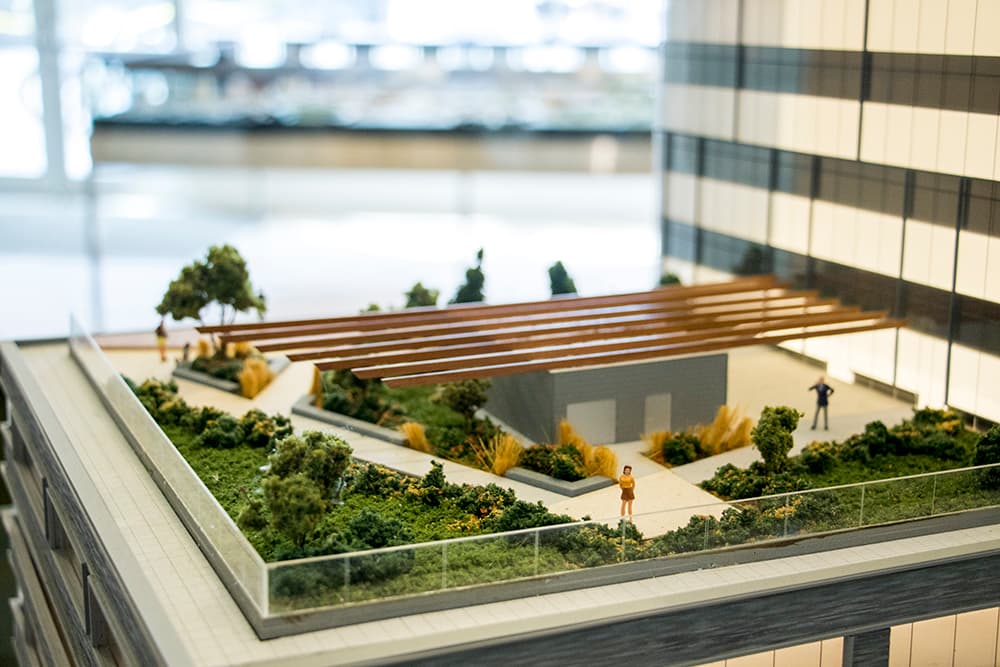
Starting Jan. 1, 2018, buildings in Denver larger than 25,000 square feet will have to devote a portion of their rooftops to vegetation, now that Denver voters have approved the Green Roof Initiative.
Opponents of the measure -- who spent at least $250,000 in an unsuccessful effort to defeat it -- believe this will have a slew of unintended consequences, and one of their leaders said Wednesday that she's encouraging developers to get their plans in before the first of the year if at all possible.
"A lot of our developer members are reaching out, asking what they should do," said Kathy Barstnar, executive director of NAIOP, a commercial real estate development association, and co-chair of Citizens for a Responsible Denver. "We can only encourage them to get their plans in before the end of the year because come Jan. 1, I believe it's too unclear what they should do."
Leila Tolderlund, an assistant professor in the University of Colorado Denver’s College of Architecture and Planning, said there's really nothing to fear. Tolderlund is an expert on green roofs and the author of the EPA’s design guidelines and maintenance manual for green roofs in the semi-arid and arid West.
"There really are a lot of pre-made modular green roof systems that meet the minimum requirements," she said. "There is no need for anxiety."
Green roofs cost more to build than conventional roofs, but they generally last much longer -- four to five times as long, Tolderlund said. There are a lot of types of green roofs, and they vary in cost and complexity. Building owners realize a lot more benefit when they have deeper soil beds that support a wider variety of plant life, she said. That extra soil and plant life does more to insulate the building and protect the roof membrane from the elements. It also adds weight, requiring additional structural support and cost. But the ordinance doesn't require developers to make that additional investment, Tolderlund noted.
Why didn't the extra money spent by opponents change the outcome?
The proponents had just $10,000 to get their message out.
"I think unfortunately we were a little slow in getting our education pieces out," Barstnar said. "Once people understood it does in fact apply to all existing buildings, not just new construction, and there's no exemption for schools or hospitals or condominiums, that it would in fact increase housing costs for people, then people understood that it sounds good in theory but it has these far-reaching effects."
Brandon Rietheimer, the main organizer of the Denver Green Roof Initiative, said he and his supporters knew they'd have to be strategic. They spent their money on social media ads instead of on mailers and TV ads, but they also fanned out across the city to Democratic house district meetings and to neighborhood association meetings.
"Those are the people who actively participate and vote in an off-year election," he said.
Denver Community Planning and Development took a "wait and see" approach before the election.
The department will work over the next several months to create the necessary procedures and policies. The initiative itself requires the creation of a technical advisory board to guide implementation, and if certain things aren't working, Denver City Council could change the ordinance with a two-thirds majority after six months have passed.
"Green roofs were already possible in Denver, and we will be working in the coming weeks to harmonize existing laws and policies with Initiative 300 and to build its requirements into our permitting and contractor licensing procedures," CPD Deputy Director Jill Jennings Golich said in an emailed statement.
Denver is one of the first cities in the United States to require green roofs, though Toronto has done so for many years and Washington, D.C., uses green roofs as part of a stormwater management program to reduce pollution in Chesapeake Bay. San Francisco also has a green roof requirement that was adopted recently after a years long process with stakeholders and elected officials. That's the approach that developers and contractors say should have been taken here, while the backers of the initiative said they took to the ballot because Denver has been intensely reluctant to impose mandates on developers. Mayor Michael Hancock came out against the measure, saying it went "too far."
On Wednesday, Hancock said the city would implement the will of the people, 52.5 percent of whom supported the measure.
"We are concerned that it may mean more initial costs," he said. "Once the people have spoken, that’s our job. There may need to be some tweaks, based on legal challenges. Though we were not going to line up and support the initiative, our values align."
Barstnar said Denver's arid climate means we won't be able to rely on the experiences of other cities, but Tolderlund said there are many examples of successful green roofs in Denver and other Western cities, including much drier places like Arizona and Nevada. You have to choose the right plants and construct roofs in the right way, but this is not uncharted territory, she said.
One example many people have seen is the Mordecai Children's Garden on the roof of the parking structure at the Denver Botanic Gardens, and there are now seed mixes prepared specifically for semi-arid climates. These roofs might not actually be green in color.
"We're ready," Tolderlund said of the landscape architects of Denver. "Bring it on."












